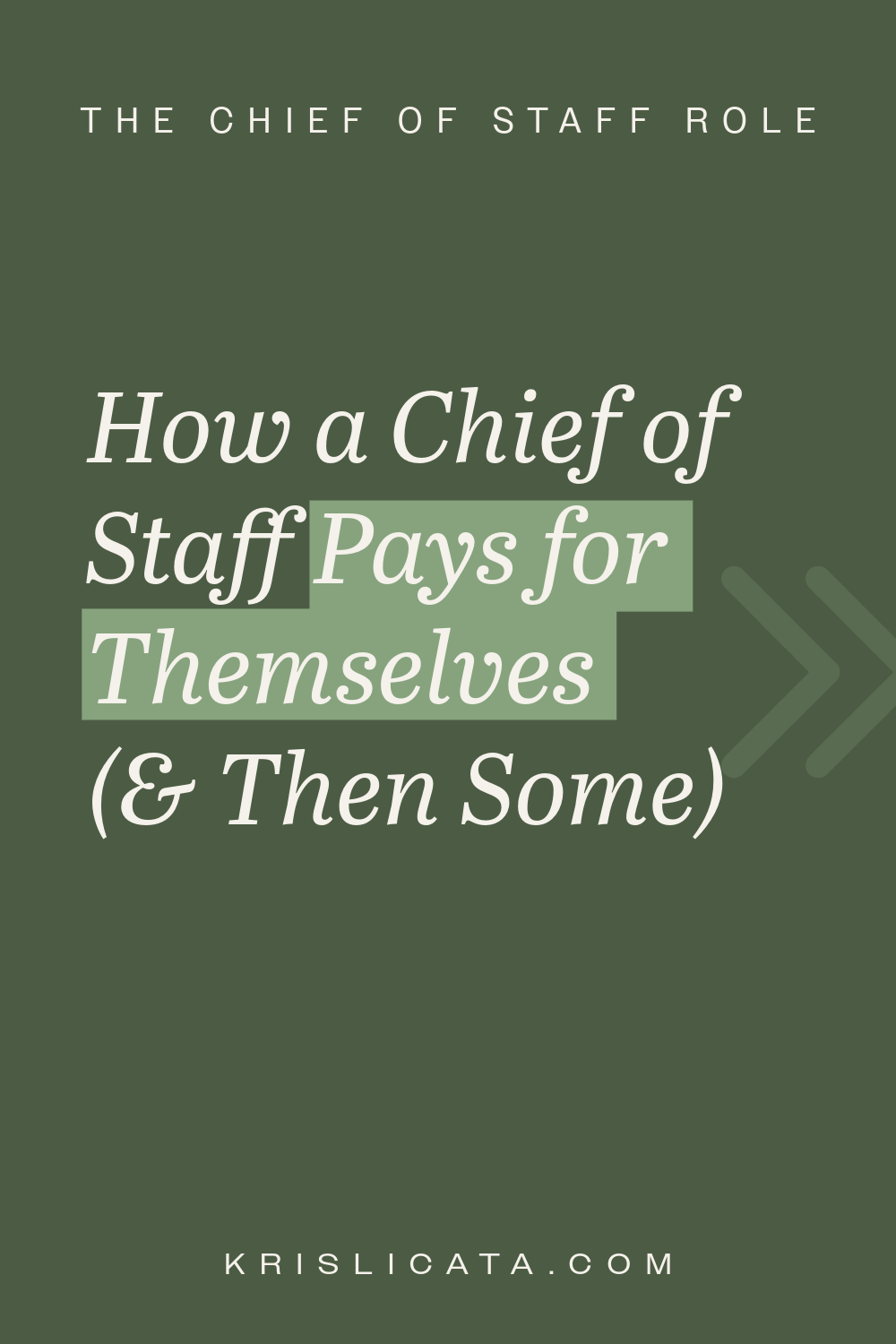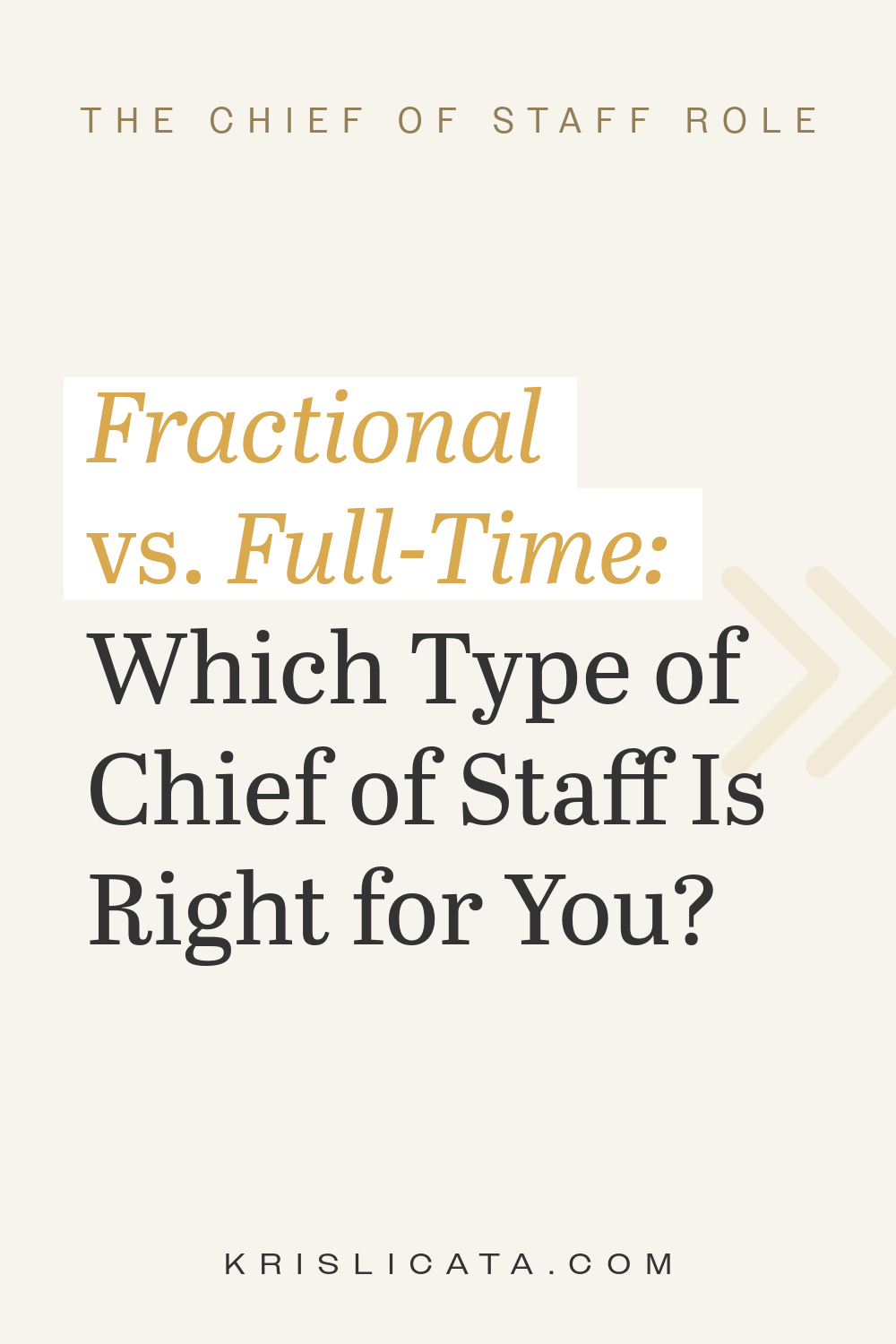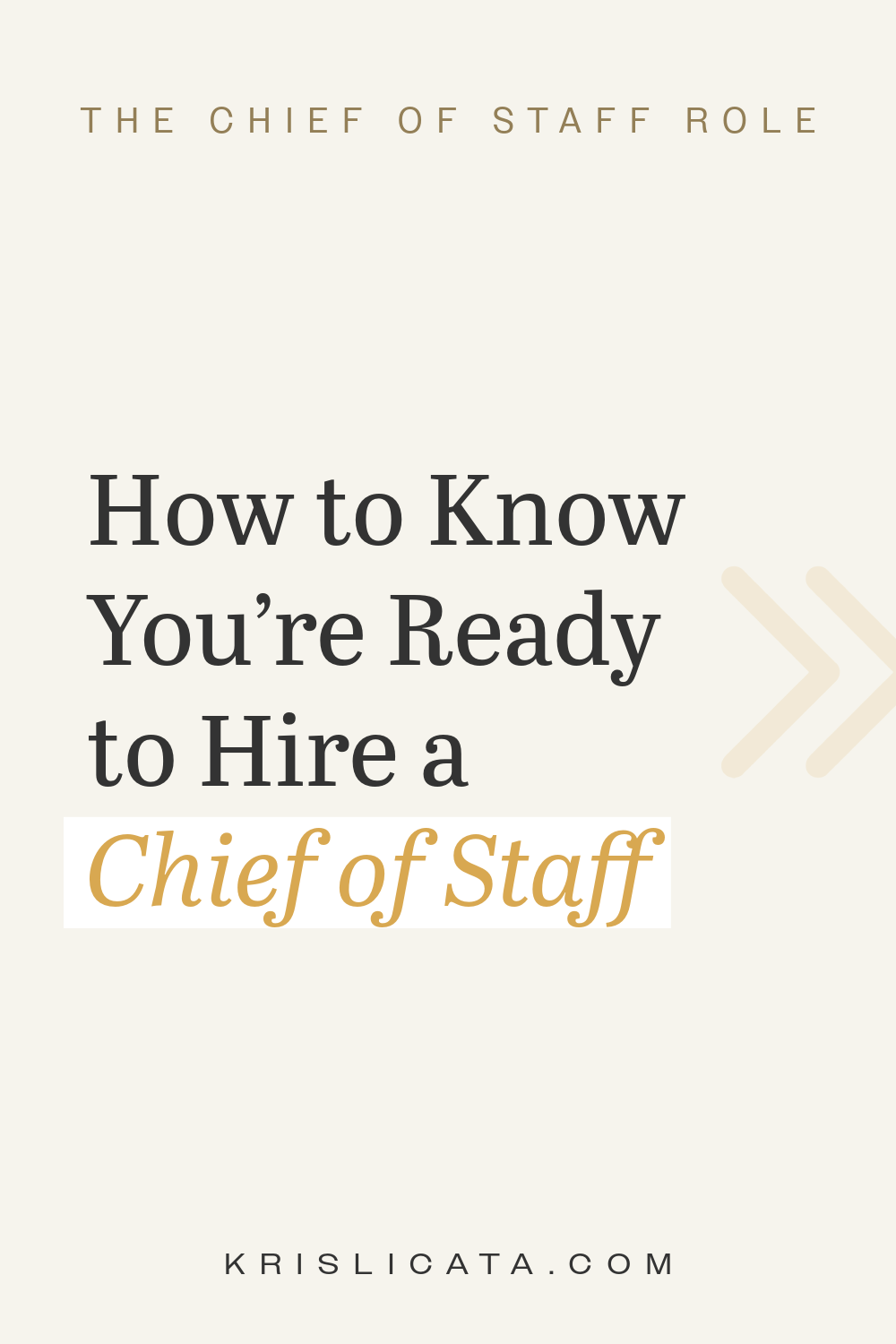What a Chief of Staff Actually Does (and Doesn’t Do)
Few roles are more misunderstood than the Chief of Staff.
Ask five executives what a Chief of Staff does, and you’ll get five different answers: project manager, executive assistant, operations lead, strategist, therapist.
The truth is that it’s none of those entirely, but it borrows from all of them.
A great Chief of Staff is the bridge between strategy and execution, the person who helps translate your big ideas into aligned action across the business.
What a Chief of Staff Actually Does
1. Turns Vision Into Action
A Chief of Staff helps you move from whiteboard to workflow by turning strategy into structured action. That means: defining success, clarifying ownership, setting milestones, and keeping things visible through progress dashboards or planning cadences.
When priorities shift (and they always do), your Chief of Staff helps you recalculate, ensuring momentum doesn’t stall when direction changes.
Think of it like this: You chart the course. Your Chief of Staff keeps the crew aligned, informed, and moving forward (without you having to steer every moment.)
2. Builds Systems for Clarity & Follow-Through
If everything feels urgent, nothing’s actually important. (Let that sink in.) A Chief of Staff designs the operating rhythm that helps your team breathe. Think weekly syncs, quarterly planning, goal reviews, and decision frameworks that prevent swirl.
They’re often the architect behind your “rhythm of business”, ensuring strategy sessions lead to actionable next steps, and meetings actually move work forward (instead of recycling updates).
3. Aligns People & Priorities
When your company is scaling fast or going through change, alignment becomes the difference between busy and effective. A Chief of Staff bridges silos by translating leadership’s vision into what it means for each team, clarifying why something matters and how everyone contributes to it.
They often run the connective tissue work:
Coordinating across departments so deadlines don’t conflict.
Managing dependencies between teams.
Making sure leaders aren’t solving the same problem in five different ways.
This will lead to fewer fire drills, clearer priorities, and a team that actually feels like one.
4. Advises, Challenges, and Filters for You
A great Chief of Staff is part strategist, part truth-teller. They’re close enough to understand your leadership style but objective enough to tell you when something isn’t landing.
They filter the noise, bringing you only what truly needs your attention, so you’re not buried in details that don’t move things forward. And when you’re stuck on a decision, they help you pause, zoom out, and make choices aligned with the bigger picture.
You don’t need another “yes” person. You need a clear thinker who helps you make the right calls faster.
5. Amplifies Communication Across the Company
As your team grows, the gap between what you said and what people heard widens. Your Chief of Staff helps you close that gap by crafting internal narratives, simplifying updates, and making sure messages cascade clearly through the organization.
They might draft leadership updates, facilitate all-hands meetings, or help you communicate vision changes in a way that builds trust instead of tension.
In short: they turn top-down communication into two-way alignment.
6. Drives Accountability (Without Micromanaging)
Accountability is a key word. Your Chief of Staff keeps initiatives moving, but they do it by connecting dots, not instilling fear. They ensure teams understand what’s due, why it matters, and how success will be measured. If an initiative slips, they diagnose the cause (capacity, clarity, or decision gap) and help you address it before it becomes chaos.
They’re the person who quietly keeps promises from falling through the cracks, without anyone feeling policed.
7. Protects Your Time & Energy
At a certain stage, your biggest constraint will become attention. A Chief of Staff acts as a gatekeeper and multiplier for your focus.
They help you:
Say no without guilt.
Keep your calendar aligned with priorities.
Delegate decisions with confidence because the systems to support them exist.
The goal is to make you brilliantly focused on the work only you can do. And keep you out of the “busy work”.
A good Chief of Staff protects your time. A great Chief of Staff will restore your energy to lead well.
What a Chief of Staff Doesn’t Do
This part matters just as much as what they do.
❌ They’re not an Executive Assistant.
An EA manages your schedule. A Chief of Staff manages your strategy and leadership. Both roles are valuable and even more powerful when they work together.
❌ They’re not a Project Manager.
They oversee initiatives, yes, but their focus is on outcomes and alignment, not checklists. They think in bigger picture systems, not tasks.
❌ They’re not a COO (but they could be one day).
While some Chiefs of Staff grow into c-suite executive roles, their role isn’t to own P&L or run departments.Their focus is to connect strategy across them.
❌ They’re not your clone.
You don’t need another version of you. You need someone who thinks differently and who complements your leadership.
The Real Value of a Chief of Staff
The ROI is productivity and peace of mind. When a Chief of Staff is in place, you gain:
More clarity. You know what matters most each week.
More bandwidth. You’re finally working on the business, not buried in it.
More confidence. Decisions move forward, even when you’re not in the room.
A great Chief of Staff makes leadership feel lighter and execution a lot faster.
Put simply: They make things work beautifully.
Considering hiring a Chief of Staff?
Whenever You’re Ready, Here Are 3 Ways We Can Work Together:
Follow Me on LinkedIn. For insights on leadership, clarity, and getting the most out of the Chief of Staff role. Follow along for quick hits and real talk about making work work.
Hire Me as Your Chief of Staff. Not sure if you need a Chief of Staff? Let’s talk it through. Book a quick discovery call to find the right fit for where you’re headed.
Collaborate With Me. Work with ambitious leaders, too? Let’s dream up a win-win: podcasts, panels, trainings, or creative partnerships that help more people lead well and live well.














